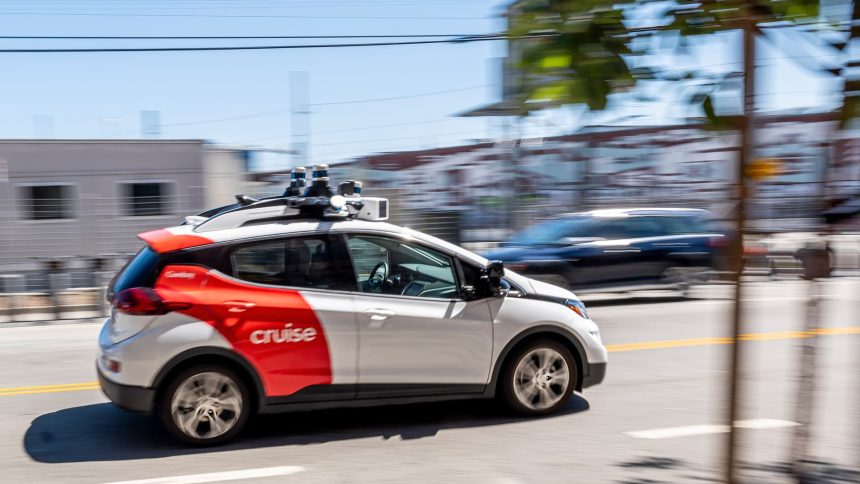Uber Technologies and General Motors’ Cruise have agreed to a multi-year partnership, under which the embattled autonomous vehicle company plans to offer driverless rides to Uber users as soon as next year.
The Thursday announcement comes as Cruise attempts to revive its robotaxi business after the company ceased operations following an October 2023 incident in which a pedestrian in San Francisco was dragged 20 feet by a driverless Cruise vehicle after she was first struck by a human driver in another car.
State and federal regulators have investigated the incident, which led to an exodus of Cruise leaders including CEO and co-founder Kyle Vogt, as well as significant layoffs.
Both Cruise CEO Marc Whitten and Uber CEO Dara Khosrowshahi hailed the partnership in a press release, stressing that the companies believe autonomous vehicles can be deployed safely.
“Cruise is on a mission to leverage driverless technology to create safer streets and redefine urban life,” Whitten said in the release. “We are excited to partner with Uber to bring the benefits of safe, reliable, autonomous driving to even more people, unlocking a new era of urban mobility.”
Khosrowshahi said in the release that Uber is “thrilled to partner with Cruise and look forward to launching next year.”
Cruise declined to provide details regarding its relaunch plans or the terms of its partnership with Uber.
In 2016, Uber aimed to develop its own autonomous vehicle technology and partnered with Volvo to do so. But it abandoned the effort after a 2018 incident, in which an Uber self-driving car struck and killed a woman named Elaine Herzberg as she was walking her bicycle across a road in Tempe, Arizona. The Uber safety driver on board at the time, Rafaela Vasquez, was ultimately held legally liable for the incident.
Since then, Uber has emerged as a partner to other autonomous vehicle developers. It has partnered with Google-owned Waymo to offer driverless rides or food delivery to Uber users via robotaxis in Arizona.
On Uber’s most recent earnings call, analysts asked the company how the emergence of robotaxis would likely impact the ridehailing giant’s business long-term.
Khosrowshahi said on the call that “AV players” experience much higher utilization with Uber than they do “without a network on a first-party basis.” He also predicted there will be a “pretty long hybrid period as autonomous is developing and regulators are trying to figure out exactly how to regulate it.” He added, “We don’t think this will be a winner-take-all market.”
Cruise competitor Waymo said this week that it is already delivering 100,000 paid robotaxi rides per week in cities where it operates commercially in the US: San Francisco, Phoenix and Los Angeles. The company is also testing in and plans to expand its service into Austin, Texas.
The new partnership isn’t the first time GM has partnered with a ride-haling company. GM invested $500 million in Lyft in early 2016, with plans to eventually develop a fleet of autonomous vehicles that could be summoned using Lyft’s mobile app. That never happened, as GM decided to instead launch its own vehicles and network through Cruise.
A Cruise spokeswoman said the company remains focused on relaunching its own driverless ridehailing service and app, despite the Thursday announcement.
Cruise is currently conducting supervised autonomous vehicle testing with a safety driver in Phoenix, Dallas and Houston.
Read the full article here




